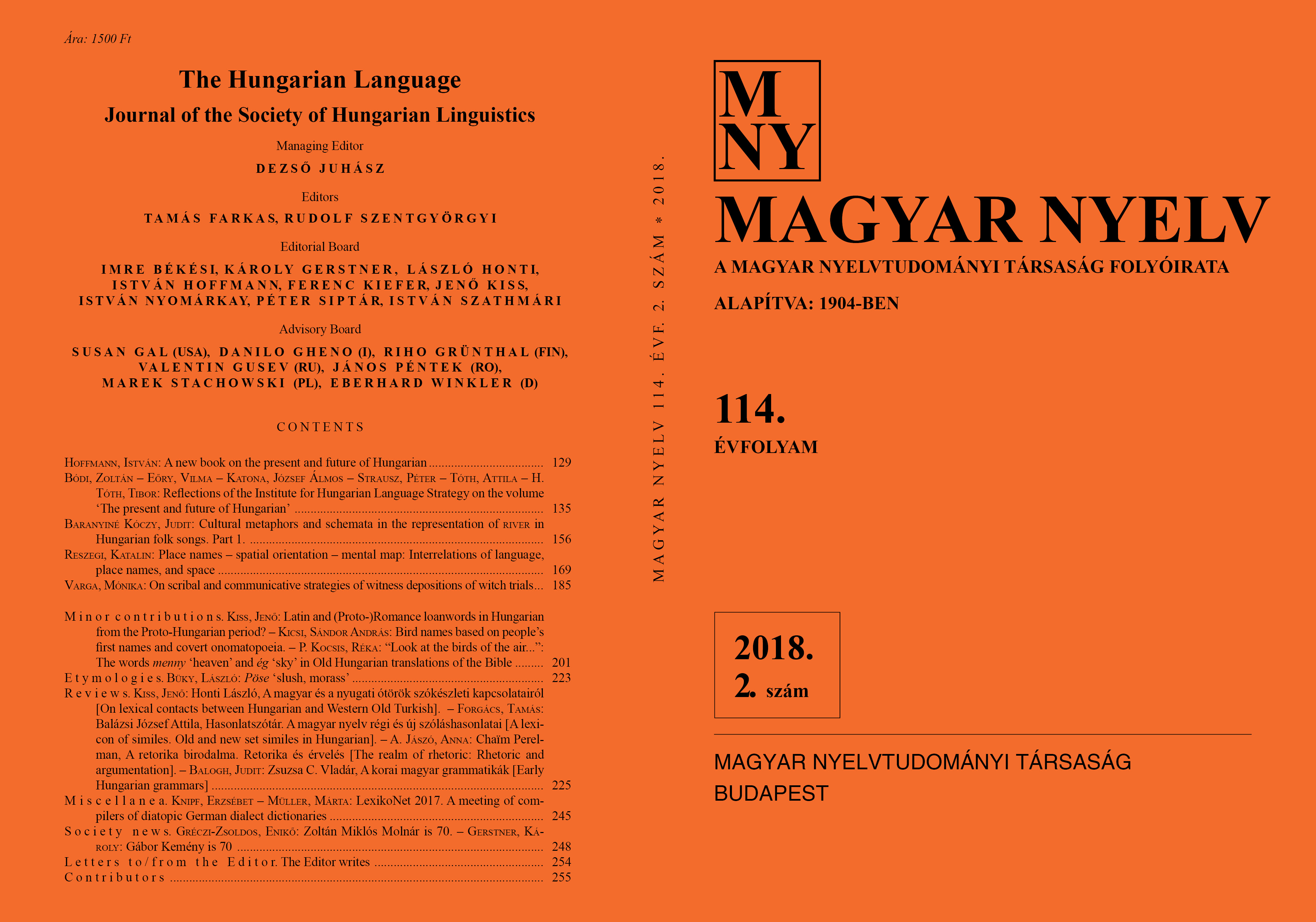Reflections of the Institute for Hungarian Language Strategy on the volume ‘The present and future of Hungarian’
DOI:
https://doi.org/10.18349/MagyarNyelv.2018.2.135Keywords:
Hungarian language, language planning, lanhuage strategy, first language education, language community, language use, language cultivationAbstract
This paper reviews and evaluates the volume ‘The present and future of Hungarian’, edited by Gábor Tolcsvai Nagy, from the viewpoint of the Institute for Hungarian Language Strategy. Given that the topic of the volume is the present state of this language, as well as language planning and language strategy, the Institute obviously appreciates the scientific results presented in the volume concerning an array of fields within the general area of language use. We also reflect on those results and mention our own accomplishments in the given fields. The community of the Institute see the importance of the volume in the fact that it justifies the existence of individual language planning processes and of language strategy that collectively covers those processes both in a professional and in an administrative sense and provides help for the relevant governmental background institution, the Institute for Hungarian Language Strategy, fulfilling a linking role between the world of linguistics and that of state administration, in developing an ever more professional language strategy for this language community.
Downloads
Published
Issue
Section
License
Copyright (c) 2024 Zoltán Bódi, Vilma Eőry, József Álmos Katona, Péter Strausz, Attila Tóth, Tibor H. Tóth

This work is licensed under a Creative Commons Attribution-NonCommercial-NoDerivatives 4.0 International License.
Magyar Nyelv is a Diamond Open Access periodical. Documents can be freely downloaded and duplicated in an electronic format, and can be used unchanged and with due reference to the original source. Such use must not serve commercial purposes. In the case of any form of dissemination and use, Hungarian Copyright Act LXXVI/1999 and related laws are to be observed. The electronic version of the journal is subject to the regulations of CC BY-NC-ND (Creative Commons – Attribution-NonCommercial-NoDerivatives).
The journal permits its authors, at no cost and without any temporal limitation, to make pre-print copies of their manuscripts publicly available via email or in their own homepage or that of their institution, or in either closed or free-for-all repositories of their institutions/universities, or other non-profit websites, in the form accepted by the journal editor for publication and even containing amendments on the basis of reviewers’ comments. When the authors publicize their papers in this manner, they have to warn their readers that the manuscript at hand is not the final published version of the work. Once the paper has been published in a printed or online form, the authors are allowed (and advised) to use that (post-print) version for the above purposes. In that case, they have to indicate the exact location and other data of the journal publication. The authors retain the copyright of their papers; however, in the case of an occasional secondary publication, the bibliographical data of the first publication have to be included.



